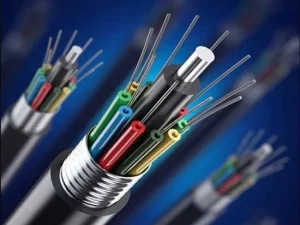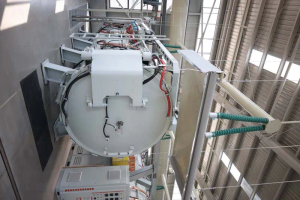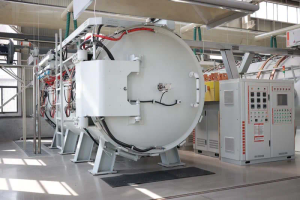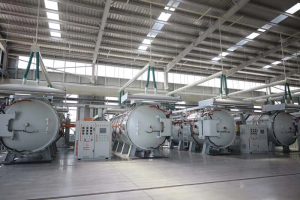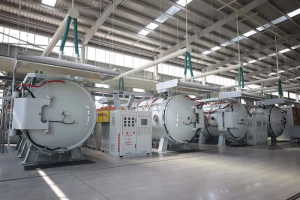Introduction to high performance AO technology – AD5755 solution analysis
The global industrial intelligence process continues to advance, and the industrial automation industry market has been attracting a lot of attention. This time we invited one of their customers, Mr. Li, a hardware engineer who works for a top-tier industrial automation manufacturer in China, to discuss the high performance AO technology with us through our technical distributor Shijian.
The first-tier industrial automation manufacturer Li works for is oriented to autonomous control, intelligent management, security and trustworthiness, providing intelligent manufacturing products and solutions with automation control system as the core, covering industrial software, automation instrumentation and operation and maintenance services. He has 7 years of experience in electronic system design and is a technical architect of control system IO. He has rich experience in designing analog-digital hybrid circuits, signal chain circuits, etc.
Abstract: In this paper, we analyze the basic features that high performance AO technology should have from the actual needs of industrial automation field in depth, and propose a simple and easy solution by combining with AD5755.
I. Why do we need high performance AO technology?
With the development of the automation industry, industrial control systems are constantly upgrading toward stronger performance, higher reliability, and smarter applicability. As the interface between control system and industrial equipment, IO system also needs to upgrade its performance continuously to meet the higher operation requirements of control system and industrial equipment.
AO (Analog Output) devices in industrial control systems are an important component of IO systems. As the “hand” of the control system to operate the industrial equipment, the AO device determines the operation status of the field equipment by outputting voltage and current signals. Therefore, the performance of the AO device determines the execution level of the control system’s control results on the industrial equipment. At present, the mainstream AO devices on the market support current and voltage signals, with signal accuracy roughly between 0.2% and 0.5% and signal refresh speed between a dozen milliseconds and tens of milliseconds.
The driving object of AO equipment not only includes various valve-type actuators, but also motor equipment, electromagnetic equipment, light equipment and so on. Some high-end applications require control accuracy and speed that are beyond the mainstream AO performance in the market. In some applications, additional signal isolation or conversion equipment is required between AO devices and actuators, which leads to the degradation of AO output performance. In order to adapt to high-precision and high-speed actuators, or to reduce the impact of signal isolation or conversion equipment on system performance, the output performance of AO devices needs to be further improved.
Second, what kind of AO technology do we need?
On the surface, we need to improve the signal accuracy and refresh speed of AO devices, but after deeper analysis, it is an extremely complex issue.
The signal types of AO devices are commonly voltage signals and current signals. The standard industrial voltage signal is 0V~5V, 1V~5V, the standard industrial current signal is 0mA~10mA, 4mA~20mA, in addition to some non-standard signal range. In terms of port characteristics, voltage signal output requires low impedance output of the port, and current signal output requires high impedance output of the port. In practical applications, the design of the port output impedance must take into account both voltage and current due to the drive capability requirements and feedback structure limitations, which brings a certain degree of design complexity.
Control systems used in industrial sites often need to face complex environmental conditions, especially installation space, ventilation conditions, and ambient temperature. the form factor of AO devices needs to be as compact as possible, which requires the AO circuits to be as small as possible. The need to maintain high accuracy despite the small size and wide temperature range requires circuit components with low temperature drift, or the lowest possible temperature rise of the AO circuit.
Figure 1 shows a common voltage-to-current AO output scheme. In order to make the load current adjustable, the tube voltage drop of the output stage triode needs to be varied over a wide range. Under certain load conditions, the heat generated by this triode can be very high, and if the heat dissipation capability of the AO device is not sufficient to offset this heat, the DAC, op-amp, and other components will have large accuracy errors due to the large temperature drift.
![]()
Figure 1
AO components in PLC and DCS equipment often have more than 1 AO output. When a single AO component accommodates multiple AO outputs, the circuit design complexity, circuit size and space conflicts, and heat generation problems faced will be more serious. This leads to the improvement of AO equipment performance, and the reliability and ease of use of AO equipment is difficult to achieve both.
In short, high-performance AO technology needs to further optimize port compatibility, improve circuit integration, and reduce heat generation as well as the impact of heat generation on the basis of improving signal accuracy and refresh speed. Traditional discrete device based signal chain circuit design is difficult to meet all requirements.
AD5755 solution
ADI’s AD5755 is a perfect solution to the above problems. The AD5755 supports a maximum of ±10V and 0mA~24mA signal range, which basically covers all signal types for industrial equipment applications.
The AD5755 is designed with a BOOST controller for each AO unit, whose role is to automatically adjust the output voltage of the AO signal supply according to the current channel signal output and load conditions. As can be seen from the example given in Figure 1 above, when the voltage value of the AO output supply can be adjusted according to the output feedback, the tube voltage drop of the driver tube of the output stage can be limited to a preset value near, for example, about 2.4V, at which time the thermal power of the driver tube becomes very low and the maximum heat source in the whole AO circuit is greatly limited. By solving the problem from the source of heat generation, the heat generation and heat dissipation of the whole AO assembly will be greatly improved.
![]()
Figure 2
The AD5755 solution integrates the traditional signal chain structure of four sets of DACs, op-amp stages, power amplifier stages, and self-regulating power controllers inside a single chip, replacing the huge circuit size and design effort when discrete components were used in the past. The chip area is only 9mm*9mm, which greatly reduces the circuit area and the size of the AO device. At the same time, the self-regulating power controller used with the AO unit effectively solves the temperature drift and aging problems caused by circuit heating. Further improves the environmental adaptability of signal accuracy and circuit reliability.
According to ADI’s official manual, the AD5755 can achieve a basic accuracy of 0.05%, and its dynamic response time is as low as tens to tens of microseconds, which is much higher than the mainstream products in the existing market in terms of accuracy and speed indicators. It is the ideal solution for next-generation high-performance AO systems.
In addition to accuracy, speed and other important indicators, for intelligent instrumentation needs, AD5755 also has HART signal modulation input function. We only need to add an independent HART Modem and input the HART signal into the CHART pin of AD5755, then we can output the current signal with HART communication directly at the Iout side.
When designing AO devices with the AD5755, we only need to focus our efforts on the protection of this chip. We can add RC, LC, magnetic beads, TVS, self-resetting fuses and other necessary protection circuits to the ports, and we can greatly improve the system’s ability to withstand them. The following figure gives a more general protection scheme for readers’ reference only.
![]()
Figure 3
Through the comparison of the traditional scheme and the AD5755 scheme, it is easy to find that the traditional electronic component-based + PCB process approach has its own bottleneck. The bottleneck that is difficult to break in the traditional process framework is solved in front of the advanced process (such as MEMS or Chip, etc.) solution. We expect that more highly integrated chip solutions or module solutions can emerge in the market in the future to provide us with stronger performance, higher reliability, and smarter applicability of product design resources.

